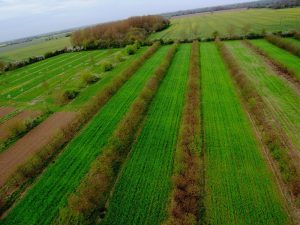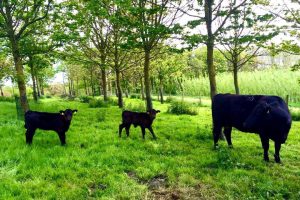Summary

This research explored the potential of agroforestry to contribute to meeting greenhouse gas emissions reductions targets outlined in Scotland’s Climate Change Plan.
Agroforestry is the combination of trees and agriculture on the same plot of land, with tree density varying depending on agricultural land type, tree species, and objective. The study also examined the economic viability of adopting agroforestry.
Research Objectives

- This project reviews existing literature and evidence to assess two important topics in agroforestry:
- the GHG removal potential of different forms of agroforestry suitable in Scotland, adding further evidence to that presented in the 2018 CXC agroforestry report;
- the economic viability of adopting such agroforestry practices.
Findings and Recommendations
Key findings are: (1) While all forms of agroforestry have the potential to sequester carbon, the benefits will vary depending on soil type, species, planting density, and location. The fastest rate of carbon sequestration is most likely to be achieved on highly productive lowland sites. (2) All forms of agroforestry suitable in Scotland are generally financially viable (i.e. generate positive income for farmers), though benefits depend on time period and whether farmers can ‘cash-in’ on wider ecosystem service benefits from agroforestry in the form of Payments for Ecosystem Services (PES) and/or public grants.
- Overall, for Scotland our findings suggest that silvopastoral ‘wood pasture’ agroforestry systems have good combined GHG mitigation and financial benefits, though the relatively low density of planting means carbon gains will be constrained.
- Silvopastoral shelterbelts, and buffer strips are likely to improve carbon mitigation gains, and silvopastoral hedgerows were also identified to have potentially strong GHG mitigation benefits, although no evidence on their financial viability was found in the evidence reviewed.
- For the cases identified that include a comparison of economic viability, all found that agroforestry is less financially viable than conventional agriculture unless relevant PES are accounted for in the calculation.
- There is therefore a strong case for funding support for agroforestry through PES schemes, including the Woodland Carbon Code (WCC). This would support increased adoption of agroforestry by improving its financial viability relative to conventional agriculture.
Downloads
Funding & Partners
-
 ClimateXChange Scotland
ClimateXChange Scotland -
 Scottish Government
Scottish Government
